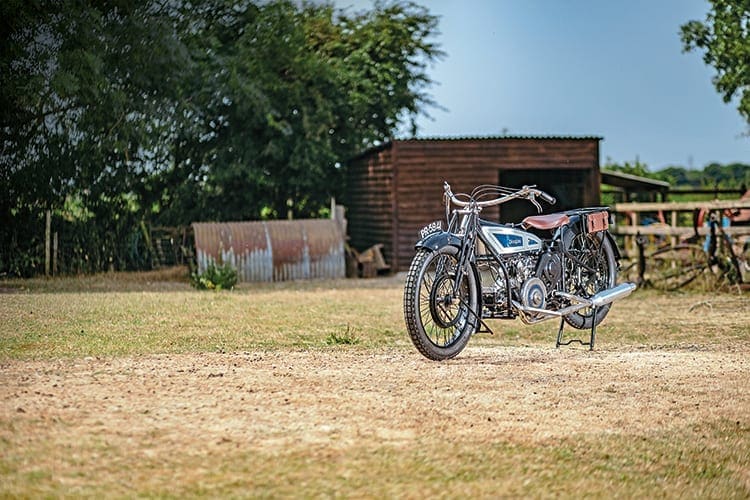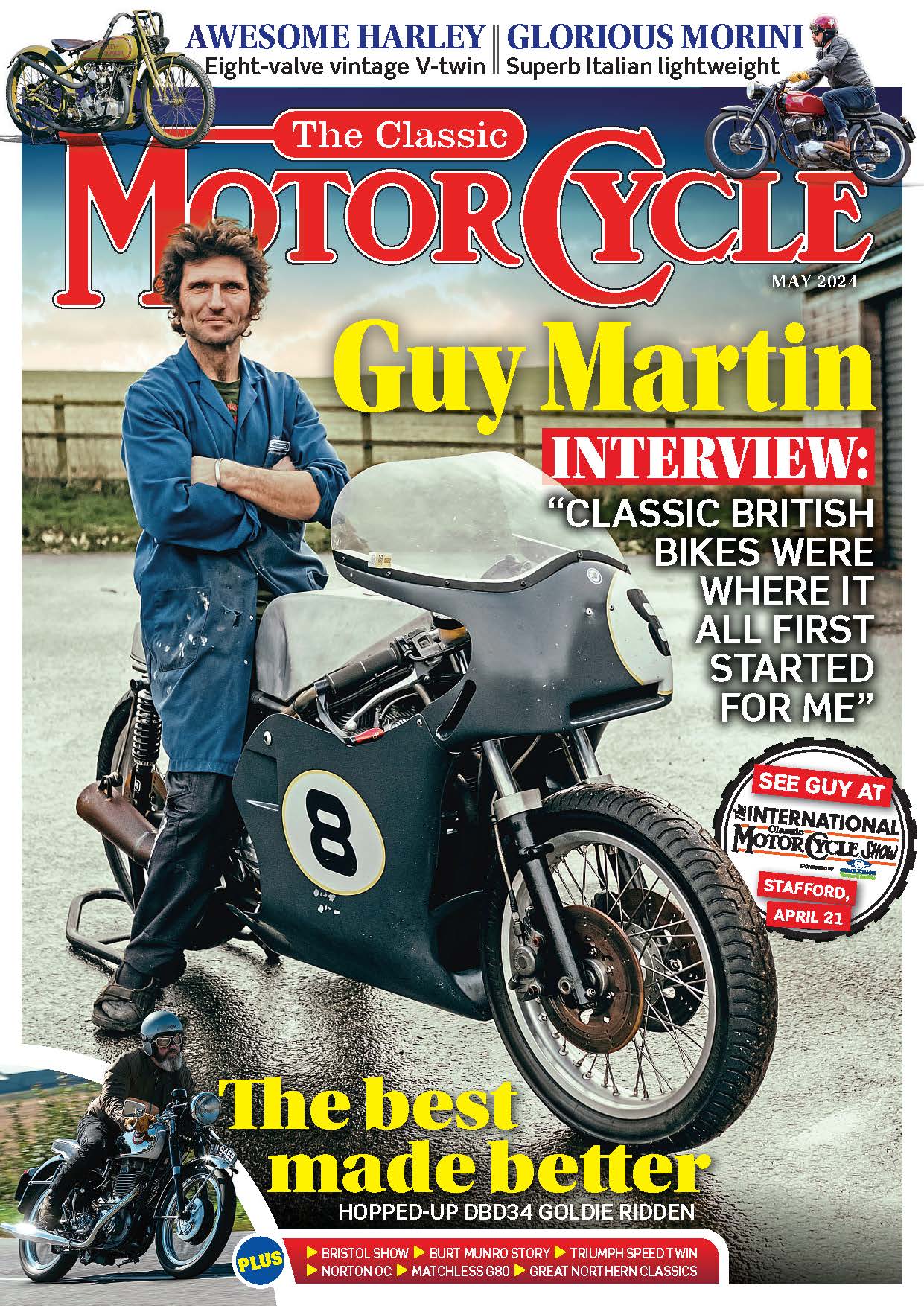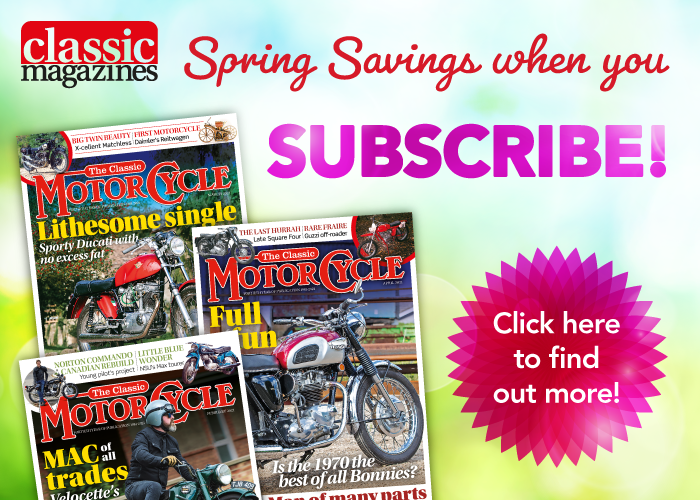
Mixed identity
Its cowhorn handlebars and footboards are rather at odds with the lusty overhead valve engine of the Douglas OB.
Enjoy more Classic MotorCycle reading in the monthly magazine.
Click here to subscribe & save.
Words: ROY POYNTING Photographs: TERRY JOSLIN
If motorcycles can be said to have characters, then the Douglas OB is an out-and-out extrovert. From its unusual engine and gearbox layout, to handlebars like the horns on Desperate Dan’s cow pie, everything about it shouts individualism. And this example – resplendent in a gleaming finish freshly applied by Sammy Miller’s Museum workshop – shows it all off to perfection.
I know some enthusiasts prefer vintage bikes unrestored, but this glitzy finish is not just for show, it’s a deliberate choice made by an intelligent owner. Desmond McCann – a south coast GP and an experienced rider of modern motorcycles – turned up on a big Moto Guzzi while I was sampling his Douglas and explained his reasoning. “I used to have an elderly patient,” he tells me, “and during a home visit one day he told me he had an old motorcycle I could have a look at if I liked. Naturally I said ‘yes please,’ so he took me to his shed and pulled back the blankets to reveal this Douglas, absolutely filthy but obviously all there.”
Would he sell it? Of course not. That had to wait until some time after the old chap had passed away when his son – knowing of Des’ continued interest in motorcycles in general and this one in particular – finally offered to sell it to him. And this is where we get back to its currently glossy appearance, because Des has several times been advised to leave the Douglas in oily rag condition. “I contacted one of the major auction houses about it,” he says, “and they immediately advised me that even cleaning it would decrease its value. When I said I’d already cleaned it they told me to stop there and not have it restored. They didn’t seem to understand that I wasn’t concerned with the price I’d get if I sold it, but what it was worth to me as a usable motorcycle.
“Living close to Sammy’s museum, it was a no-brainer to bring it here and have it cosmetically and mechanically done up, and I’m delighted with the result.” And why wouldn’t he be? Let the busybodies say what they like, it was Des’ own decision, and he has undeniably ended up with an extremely smart and impressive motorcycle.
The great majority of Douglas’s motorcycles featured a flat-twin engine, but whereas post-Second World War engines were mounted cross-wise, this one follows the earlier practice of aligning the cylinders with the wheelbase. And that follows from the way the firm fell into motorcycle manufacture almost by chance.
Brothers William and Edwin Douglas had set up a general blacksmith and engineering business in the Kingswood area of Bristol in 1882, and later expanded into foundry work. That led them into contact with a customer named Joseph Barter who used their castings on a little single-cylinder motorcycle he made between 1902 and 1905. It was evidently successful enough that he then formed a company aptly called Light Motors, and began making the 200cc Fee with a fore and aft flat twin engine; arguably the first commercial appearance of the type. Light Motors unfortunately failed a couple of years later, but Barter was offered employment by the Douglas brothers and they continued production of his design which they renamed the Fairy.
Read more in the December issue of TCM – on sale now!
Advert
 Enjoy more The Classic MotorCycle reading in the monthly magazine. Click here to subscribe.
Enjoy more The Classic MotorCycle reading in the monthly magazine. Click here to subscribe.











